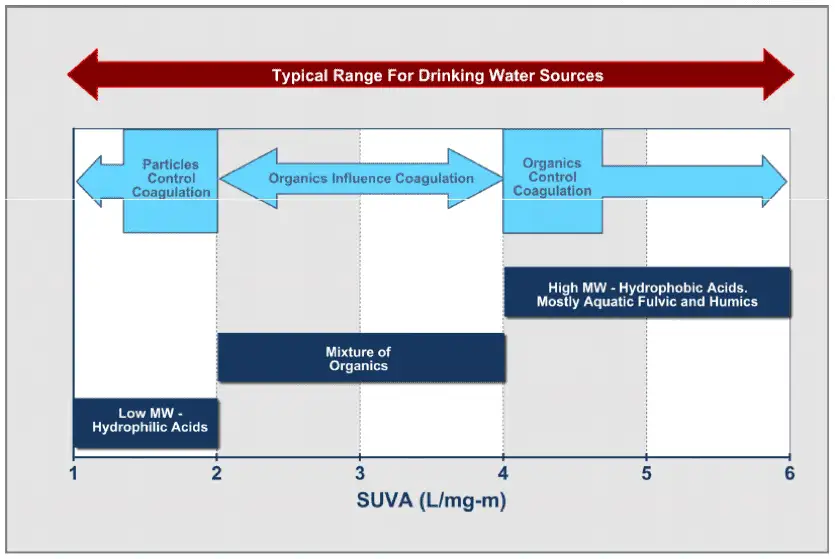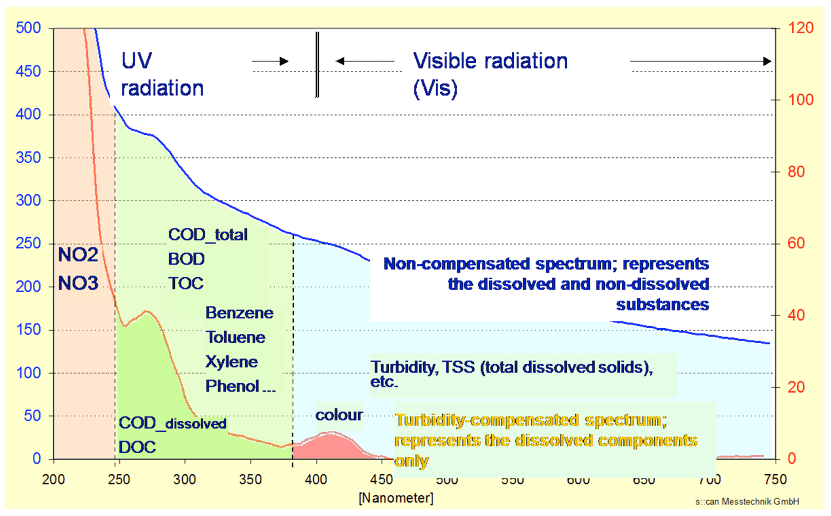Advanced and Automatic Coagulation Control with Compass
Recent advances in instrumentation have enabled water suppliers to dispense with single wavelength UV254 monitors, or streaming current/Zeta potential controllers, and instead, install fully submersible UV-Vis spectrophotometers for continuous full spectrum online water quality monitoring.
UV-VIS & NOM Characterisation & SUVA Calculation

s::can Submersible Spectrometer & Compass automatic coagulant control software
Measurement
s::can UV-VIS spectrometers measure light absorbance across a range of wavelengths (200-750nm) and are generally accepted to improve the robustness and accuracy of the NOM measurement when compared to a single wavelength UV254 sensor based monitoring system.
Automatic Coagulation Control
Particulate matter. These impact on coagulant demand, often in a diametrically opposed manner. This is not as easy as it sounds. For example; “true” colour is the dissolved colour of a liquid with solids removed (filtered), “apparent” colour (that which the human eye sees) is the combined colour resulting from both coloured dissolved, particulate & colloidal matter. Any reliable system must be able to distinguish and characterise these variations such that the correct dose rate is delivered and optimal DOC removal is achieved. s::can’s submersible spectrometer: the Spectrolyser achieves this online within seconds. The Spectrolyser combined with the Compass algorithms stored on the S::CAN analyser system are the key to reliable automatic coagulation control. Streaming current or Zeta potential systems are unable to characterise raw water in this way and therefore suffer poor control when sudden flashy environmental conditions present themselves at the water treatment works inlet, ironically, just when a reactive and responsive control system is needed!


